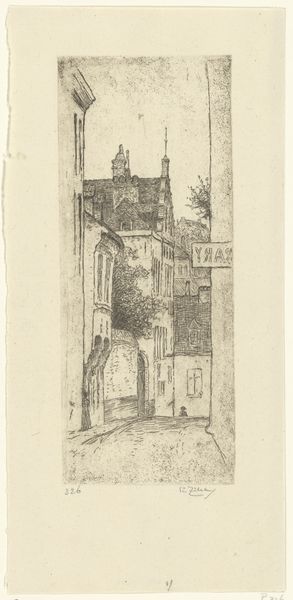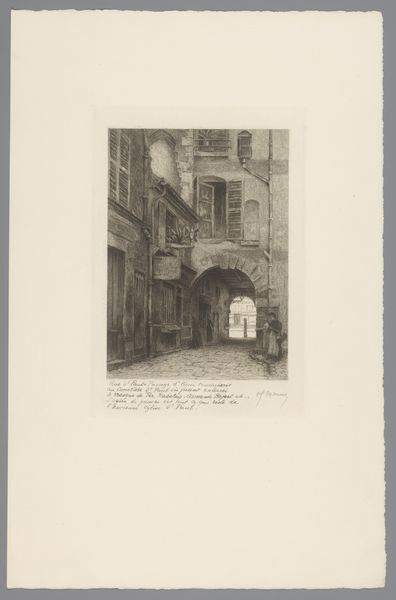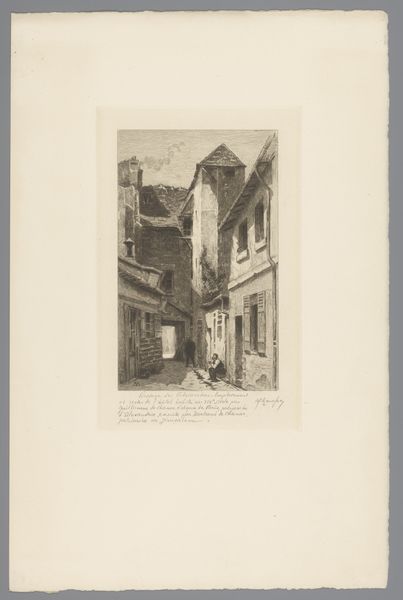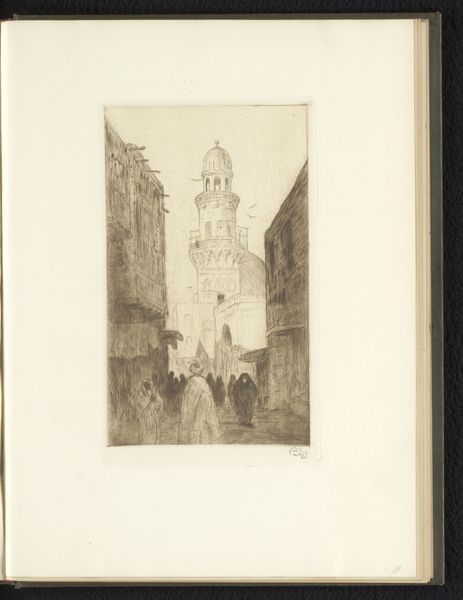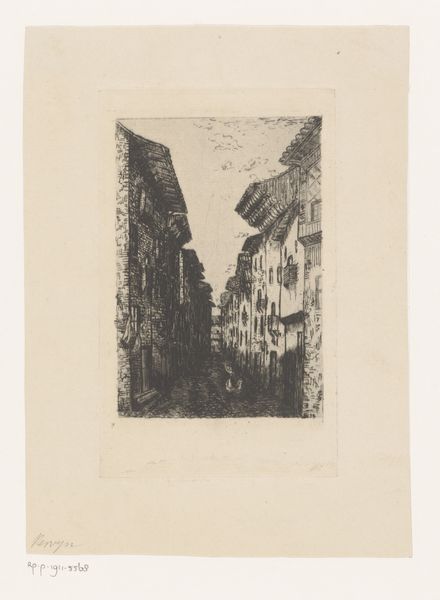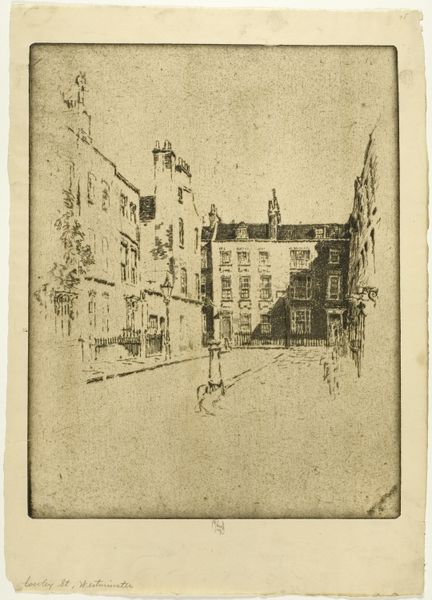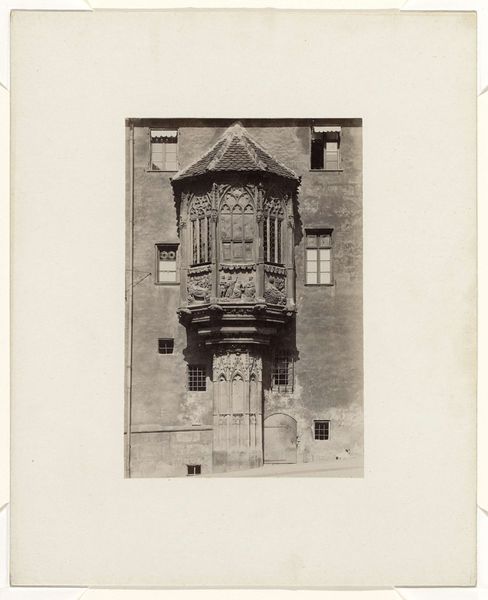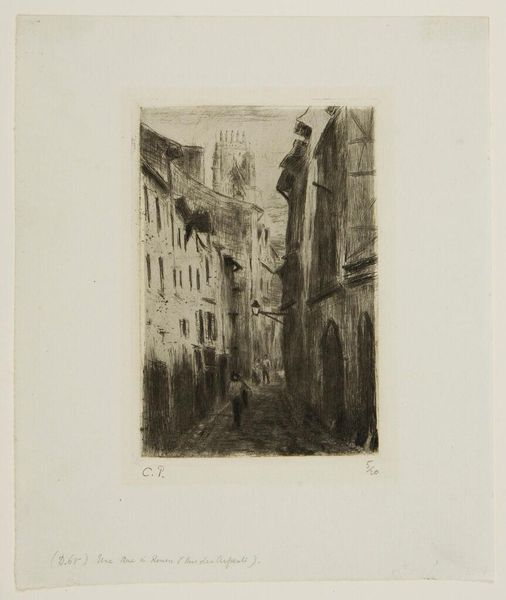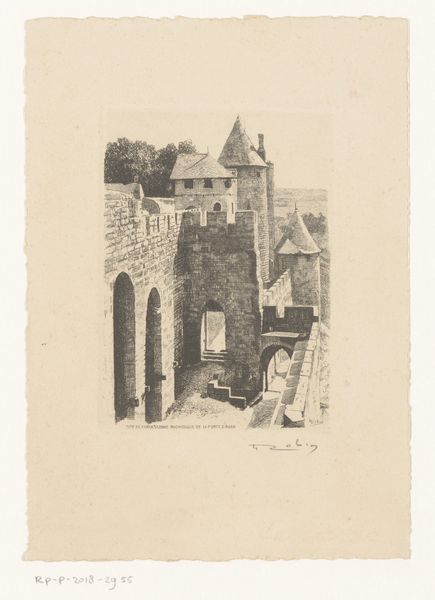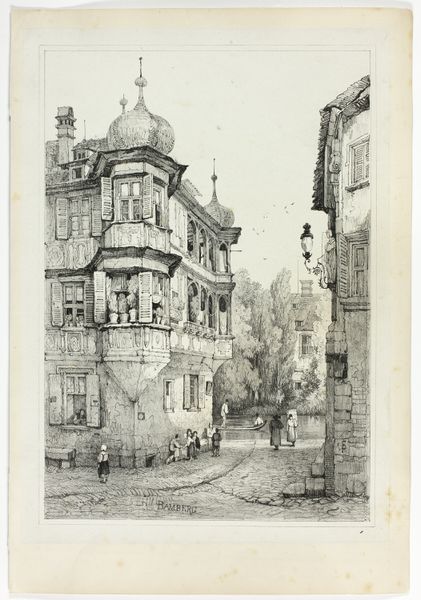
drawing, print, etching, paper
#
drawing
# print
#
etching
#
paper
#
cityscape
#
realism
Dimensions: 241 × 112 mm (image/plate); 303 × 195 mm (sheet)
Copyright: Public Domain
Curator: Here we have David Young Cameron's "St. Aignan, Chartres," an etching and drypoint print from 1916, presently held at The Art Institute of Chicago. Editor: My first impression is one of formidable stone softened by light. There's a strange mix of starkness and gentle illumination. What's your take? Curator: I see enduring strength imbued with history. Cameron masterfully captures the essence of the medieval cityscape, invoking centuries of cultural memory. Notice how the tower, silhouetted against a distant landscape, suggests steadfastness amidst temporal flux. Editor: I’m really drawn to the technical aspects. Consider the artist's approach to materiality; the precision with which he manipulated the metal plate and acid. The controlled, almost mechanical, reproduction seems deliberately at odds with the organic, worn quality of the architecture itself. Curator: Yes, and beyond that, Cameron seems to be presenting us with something deeper than architectural accuracy. The interplay of light and shadow creates a psychological space, inviting contemplation on the passage of time and its effect on collective memory. That archway, almost beckoning us... Editor: An archway, literally a built passage. How interesting it appears less an open invitation than a kind of framing, an imposed perspective. Are we passing through the gate, or is the image itself attempting to contain the dynamism inherent to a "cityscape"? Also, the paper's own texture, though perhaps accidental, softens some of the built structure's harder lines. Curator: And yet the verticality of the composition—the towering structures—suggests aspiration, a striving towards something beyond the material. Perhaps a reflection of the city's spiritual significance? Editor: I tend to resist readings of such aspirations. Isn't it also worth considering what would be seen from such heights? The etcher creates a picture with specific proportions that limit what is shared; it presents more a will to power. It has a certain, I think very 20th century, coldness. Curator: Perhaps it is both. Thank you for highlighting some vital nuances to consider when viewing the work. Editor: Thank you. I will remember how an artist's touch might speak of broader truths concerning material limits and access.
Comments
No comments
Be the first to comment and join the conversation on the ultimate creative platform.
